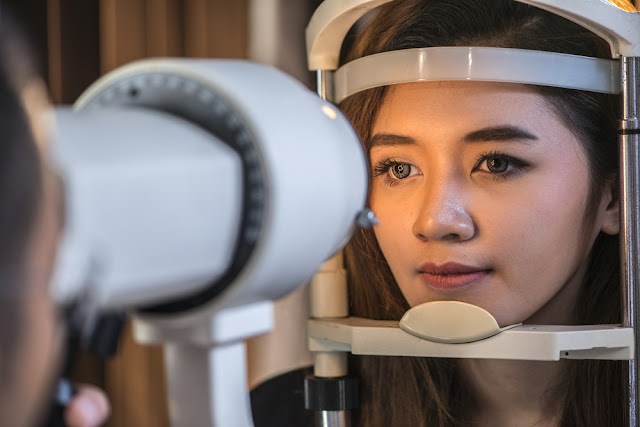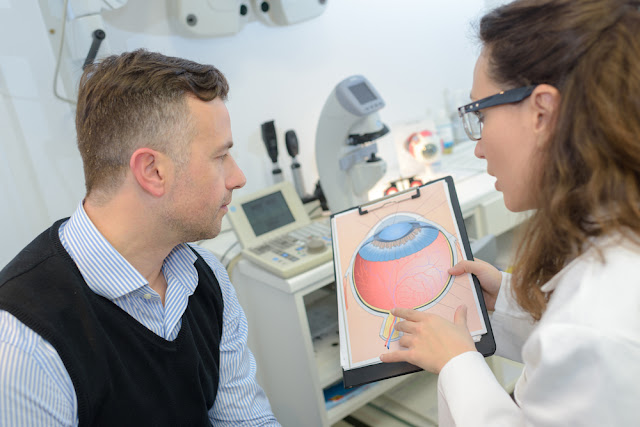Among all the major eye disorders, Glaucoma is the second leading cause of blindness among people. It is frequently seen in women and mostly develops in older age. If you have been experiencing redness and itching along blurred vision and pain in the eye, you might be suffering from Glaucoma. Here is everything that could help you learn about this condition and its early diagnosis.
What is Glaucoma?
Glaucoma is a condition or eye disorder that primarily affects the optic nerve and worsens over the time. The optic nerve is the primary nerve for vision and is the carrier of information from the eye to the brain. The nerve impulses sent to the brain are transmitted from the retina and are recognized as vision later.
The optic nerve is injured because of the buildup of pressure in the front part of the anterior chamber of the eye that is caused due to the accumulation of fluid. The anterior chamber is usually bathed and nourished due to the flow of a clear liquid. In a Glaucoma patient, this fluid drains slowly than others which is the reason for the fluid build up.
Glaucoma is considered as one of the most dangerous eye conditions as they show no symptoms in the later stages and show up later in life. The side vision or peripheral vision or the is affected initially, and if the condition is left untreated over the time, it ends up damaging the central vision as well eventually leading to blindness. Blindness due to this condition only occurs in people above 60 and can easily be prevented by early diagnosis and treatment.
Types of Glaucoma
Glaucoma is of two main types:
- Open-angle Glaucoma: It can also be called as wide-angle Glaucoma by your doctor. It more commonly occurs than the other. The trabecular meshwork, known as the drainage system of the eye, might look normal, but the fluid from the eye doesn't drain the way it should.
- Narrow or closed angle Glaucoma: It is also named as acute or chronic angle-closure. The angle between the iris and the cornea is too low which avoids the proper draining of the fluid. The iris is the prime interruption.
Related Article: What are the different types of glaucoma?
How to identify Glaucoma?
Glaucoma is also named as the “sneak thief of vision.” It is not noticed by people until it is in the later stage. The first sign that indicates Glaucoma is the loss of peripheral vision. Here are few signs that you need to take an immediate medical appointment:
- Halos around lights are seen
- Narrowing of vision or tunnel vision.
- Pain in eye
- Loss of vision
- Redness of eye
- Vomiting and nausea
- Hazy looking eyes
Causes
- Genetics: If you have a positive family history of Glaucoma you are most likely to develop it at some point in your life.
- Ethnicity: Eastern Asian people have shallow anterior chamber depths which makes them vulnerable to Glaucoma.
- Other factors like diabetic retinopathy and central retinal vein occlusion can lead to secondary glaucoma.
- Eye injuries can also lead to Glaucoma in some people.
- Some eye surgeries have Glaucoma as a postoperative consequence.
How can it be treated?
Eye drops, laser surgery or microsurgery, are the main options that are usually prescribed by the doctor.
- Eye drops: Eye drops can help manage the condition by either increasing the outflow of the fluid or by reducing its formation. The eye drops can cause a few side effects like irritation, blurred vision, stinging and redness.
- Laser surgery: The procedure can both increase the flow of the liquid and decrease the blockage in different cases. Trabeculoplasty opens the are of drainage whereas iridotomy is the procedure that allows the free flow of fluid by making a hole in the iris. Cyclophotocoagulation is the surgical procedure that decreases the production of fluid by treating the middle layer of the eye.
- Microsurgery: Sometimes a laser surgical procedure called trabeculectomy fails and is redone by implanting a tube that helps in the drainage of the fluid. This surgery has postoperative effects consequences like bleeding, infection and temporary or permanent loss of vision.
Nashville Optometrist, Dr. Durocher, recommends having a complete examination of an eye every 1-2 years if your family members have suffered from Glaucoma and if you're above the age of 40. Other systemic diseases increase the risk of the disease. Early diagnosis can save you from the loss of vision. So book an appointment with your eye doctor today!
References:
- https://en.wikipedia.org/wiki/Glaucoma
- https://www.aao.org/eye-health/diseases/what-is-glaucoma
- http://opmt.com/education/glaucoma/


Truly I discovered this article more useful, much obliged for sharing this article
ReplyDeletedentist in san jose
I was getting bore since morning but as soon as I got this link & reached at this blog, I turned into fresh and also joyful too. dentistblog
ReplyDeleteNice Blog. For more information visit Vision Center in Hillsborough New Jersey
ReplyDelete